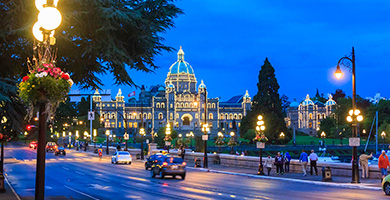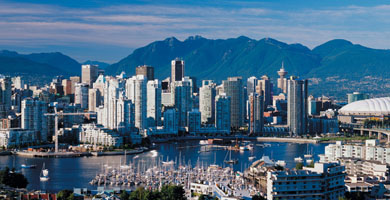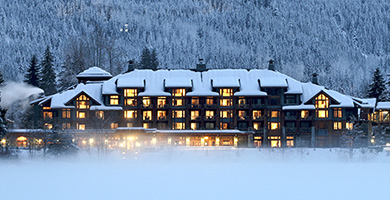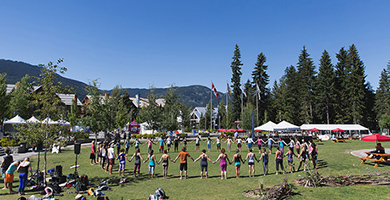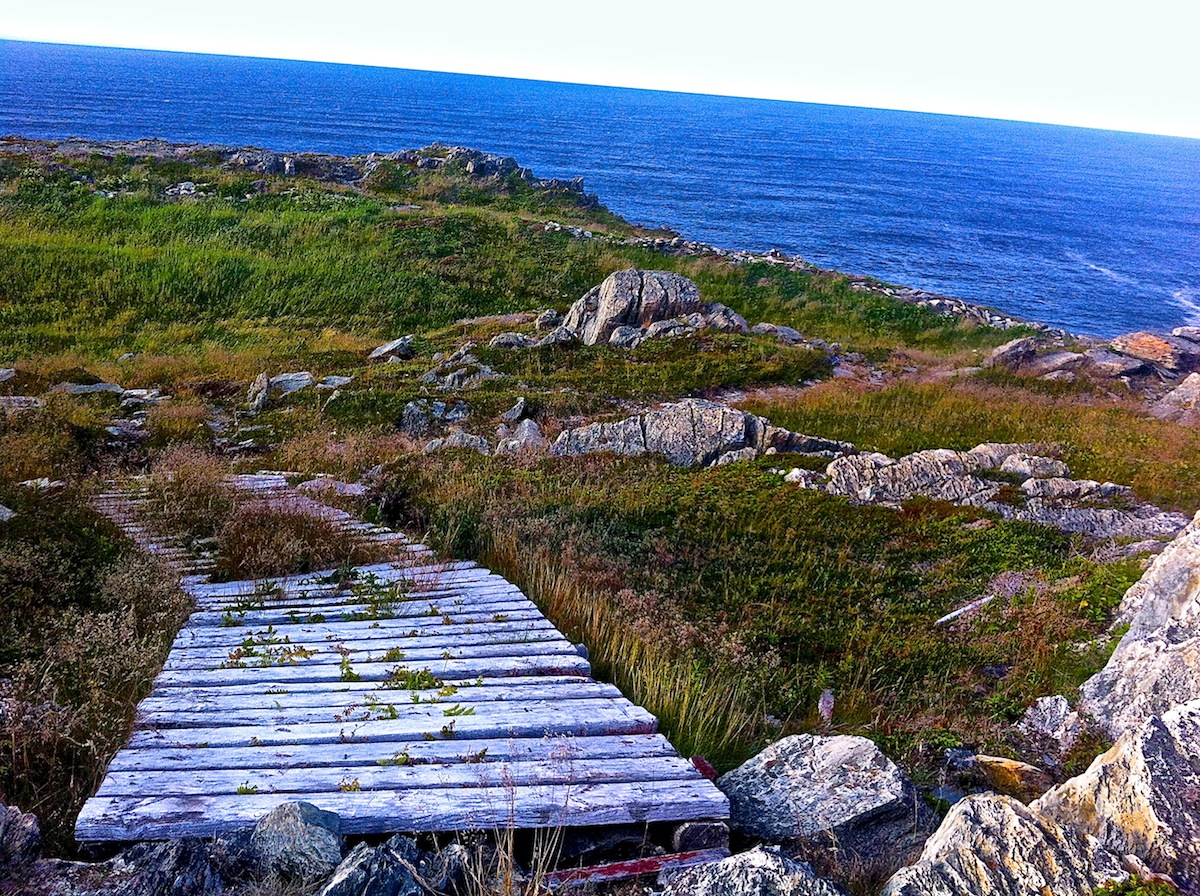Going Native On Vancouver Island

Symbols of orcas and eagles decorate indigenous community center, British Columbia. Image: Aboriginal Tourism Assoc. BC
Just a few hours from the gleaming towers of Vancouver, dancers in ornate costumes portraying crows, bears and mythical beasts swirl to a hypnotic drumbeat in a vast longhouse. This isn’t British Columbia’s blissed-out version of Burning Man; it’s a performance given by Komoks tribal members on Vancouver Island, a dance done by native peoples here long before Europeans arrived and spoiled the party, outlawing such gatherings up until just about half a century ago. [To see a video of the Komoks’ dances, click here]
Today, however, progress has prevailed and guests now have a chance to enjoy experiences like this, diving into a rich culture which saw its renaissance hit full stride just in time for the 2010 Winter Olympics. The Vancouver Winter Games marked the first time indigenous people had been acknowledged as official hosts. Just as significant, however, is the fact that never before have there been so many opportunities to interact with and appreciate the culture, lands and traditions of the people known here as the First Nations.
Some experiences might be what you would expect: Paddling a traditional Tseycum canoe with a tribal chief as he explains the history and culture of the Gulf Islands off the cheerful bayside town of Sidney. Or visits to galleries and longhouses to take in the powerful iconography, carvings and dances of tribes like the Kwakwaka’ wakw and Komoks on their ancestral lands. Evocative experiences to be sure. But sitting on a sun-drenched terrace at a native-owned winery, drinking a jammy Pinot while getting tasting notes from a barely-legal winemaker from the Cowichan tribe isn’t such a bad way to roll either. It all starts with the 90-minute ferry ride from the city of Vancouver to Vancouver Island, a world unto itself brimming with small fishing towns, misty forests, mythical legends and… the world’s largest hockey stick (this is still Canada after all, eh).
Most travelers disembark in the capital city of Victoria, a picturesque town featuring lots of charm, a little schmaltz, and some superb hotel and dining options. Whether you choose to linger or continue on, make your first stop the Cherry Point Vineyards, about an hour’s drive on Highway 1. Owned by the Cowichan tribe, this 24-acre winery produces a very respectable Pinot Noir (their production regularly sells out), but what they’re really known for is an aromatic blackberry dessert wine. Flip for designated driver, then imbibe and soak up the sun while taking in the scenery of rows of varietals framed by towering firs.
Back on the road, as you approach the town of Duncan, cast your eyes skyward. You’re looking for totem poles and – the world’s largest hockey stick. Known as The City of Totems, Duncan has nearly 80 of the traditional carvings spread throughout town. As for the hockey stick, all 205 feet of it adorns the Cowichan Community Centre. Quixotic quest fulfilled, head over to the Quw’utsun Cultural Center, where your appetite for native culture can be sated by a collection of museum-quality totems carved in red and yellow cedar, interpretive walks along the Cowichan River, and a stop at the Riverwalk Café, which serves up native fare with a twist, like venison burgers and traditional flatbread.
Continuing your journey north past towering stands of Douglas firs and mirror-still lakes, you arrive in the Comox Valley, where over 20 Olympic teams — including the US snowboarding team — trained before the Games. It’s also the location of the I-Hos gallery, set on ancient tribal land and named for a mythical two-headed serpent in the Komoks tradition. The gallery sells a striking collection of jewelry, masks, textiles and carvings representing ravens, killer whales and other ancestral totems rendered by local master artisans. You might even catch up with Andy Everson, a young native artist from Comox who has gained worldwide recognition for fusing native motifs with modern aesthetics. “The art, dancing and this house are a vital part of our culture and we feel it’s important to share,” Everson said recently after a performance by the Komoks dance troupe in the adjacent tribal longhouse.
Your next stop on the tribal tour is heavily forested Quadra Island. This is your chance to really disconnect and tune in with the region’s native vibe. A quick 10-minute ferry ride from the town of Campbell River, the island is home to a network of hiking trails, eco-adventures that include eagle and whale sightings, and one of the few native-owned and operated lodges in Canada, Tsa-Kwa-Luten. Meaning “gathering place” in the Kwak’wala language, the lodge is designed to evoke a traditional “big house” with soaring ceilings and beams and First Nations art. Rooms are tidy and simple, and instead of TV’s, feature ocean views, so you won’t get to catch that rerun of “Lost.” But you can loose yourself on the beach searching for ancient petroglyphs, hiking a lush coastal trail, or enjoying freshly caught scallops on the restaurant’s dining deck. Looking out over wave-tossed Discovery Passage, it’s easy to feel you’ve arrived at the region’s native heart.
Latest posts by Eric Hiss
- Water Warriors Hit The Beach In SOUTHERN CALIFORNIA - September 4, 2015
- BORA BORA'S Ultimate Beach Party - November 17, 2014
- Surf in Style in LAGUNA NIGUEL - June 26, 2014




